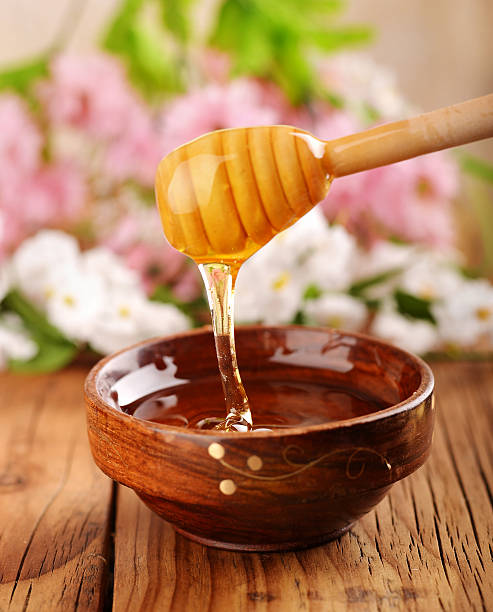
Why Is Honey Such a Big Deal?
Honey has been a favorite sweetener and natural remedy for thousands of years. It’s more than just a sugary liquid—it’s nature’s gift, packed with flavor, nutrients, and tradition. Whether you’re stirring it into tea or drizzling it over toast, honey brings a little sunshine into your day. And if you haven’t tried comb honey yet, you’re in for a real treat.
But what exactly is honey? And how is comb honey different? Let’s explore this golden goodness in a simple, friendly way.
What Is Honey and How Is It Made?
Honey is made by bees who collect nectar from flowers. They bring it back to the hive, process it, and store it in wax cells—called honeycombs. Over time, the moisture evaporates and the nectar thickens into honey.
Here’s what makes honey special:
-
It’s 100% natural—no added sugar or preservatives.
-
It never spoils if stored properly.
-
It comes in many varieties, depending on the flowers the bees visit.
Some honey is liquid and smooth, while other kinds are thicker or even creamy. But one of the most natural forms is comb honey—which still includes the wax comb made by the bees themselves.
What Is Comb Honey and Why Should You Try It?
Comb honey is honey that’s left in its original beeswax structure, just the way the bees made it. It’s cut straight from the hive and packaged without filtering or heating.
Why people love comb honey:
-
It’s the purest form of honey—untouched and raw.
-
You can chew the wax like gum (it’s edible!).
-
It adds a rustic, beautiful touch to your food or snack plate.
Imagine cutting into a piece of warm toast and laying down a square of comb honey. It slowly melts and oozes into the bread—both sweet and slightly chewy. It’s an experience that’s both nostalgic and delicious.
Where Can You Use Honey and Comb Honey?
You can use honey almost anywhere you’d normally use sugar—but with more flavor and a healthier twist. Comb honey takes it up a notch, especially when you want to impress your guests or treat yourself.
Some tasty ideas:
-
Add a chunk of comb honey to a cheese board with soft brie or sharp cheddar.
-
Stir liquid honey into warm tea, smoothies, or hot lemon water.
-
Drizzle honey over Greek yogurt, oatmeal, or fresh fruit.
-
Spread comb honey onto biscuits, toast, or warm pancakes for a textured treat.
-
Use honey in salad dressings or marinades for a hint of sweetness.
Honey also works well in baking. Just remember, it’s sweeter than sugar, so you can use a little less!
How to Choose the Right Honey for You
With so many honey options on shelves, how do you know what to pick? Here’s what to look for:
Raw honey: This is honey that hasn’t been heated or heavily processed, keeping its nutrients and enzymes intact.
Local honey: Sourced from nearby bees and flowers, it supports local beekeepers and might help with seasonal allergies.
Comb honey: Great if you want the full honey experience, straight from the hive.
Try a few different types to find your favorite. Lighter honey tends to be milder, while darker honey has a bolder, richer taste.
Is Honey Actually Good for You?
Honey isn’t just tasty—it’s also full of good stuff. It contains natural antioxidants, enzymes, and even small traces of vitamins and minerals. People have used honey for sore throats, skin care, and digestive support for centuries.
A few friendly reminders:
-
A spoonful of honey can help soothe a cough.
-
Honey has antibacterial properties and can be used in simple home remedies.
-
It’s still a sugar, so enjoy in moderation.
And don’t give honey to babies under 1 year old—it’s not safe for them due to the risk of infant botulism.
Tips for Storing and Enjoying Your Honey
Honey is easy to keep around, and it doesn’t spoil. But here are a few tips to make the most of it:
-
Keep honey in a cool, dry place—no need to refrigerate.
-
If it crystallizes, warm the jar gently in warm water to make it smooth again.
-
Store comb honey in an airtight container at room temperature.
Crystallized honey is still good—some people even prefer the texture! It’s a sign that your honey is raw and unfiltered.
Final Thoughts: Sweeten Life Naturally
Honey is more than just something to sweeten your tea. It’s a part of history, culture, and nature’s rhythm. And when you try comb honey, you’re tasting honey just as the bees made it—untouched, golden, and beautifully simple.
Whether you’re enjoying a spoonful in your morning tea or showing off a piece of comb honey at your next brunch, honey brings a little natural sweetness to your life. And that’s something worth buzzing about.
